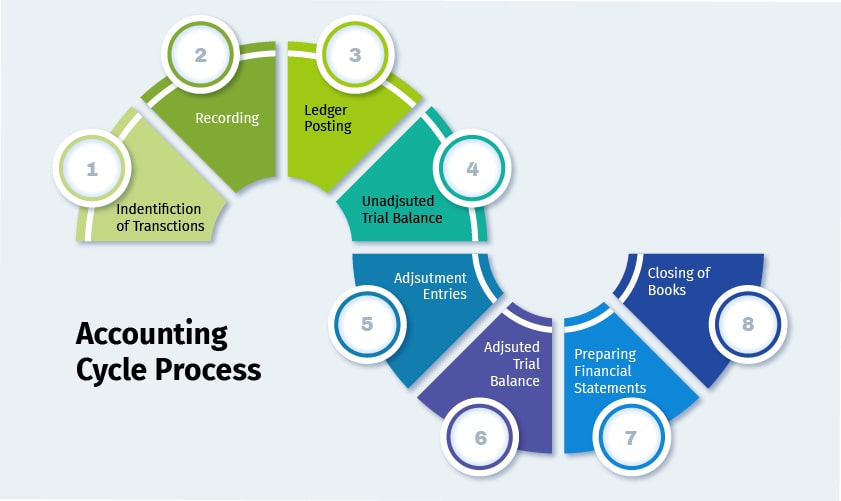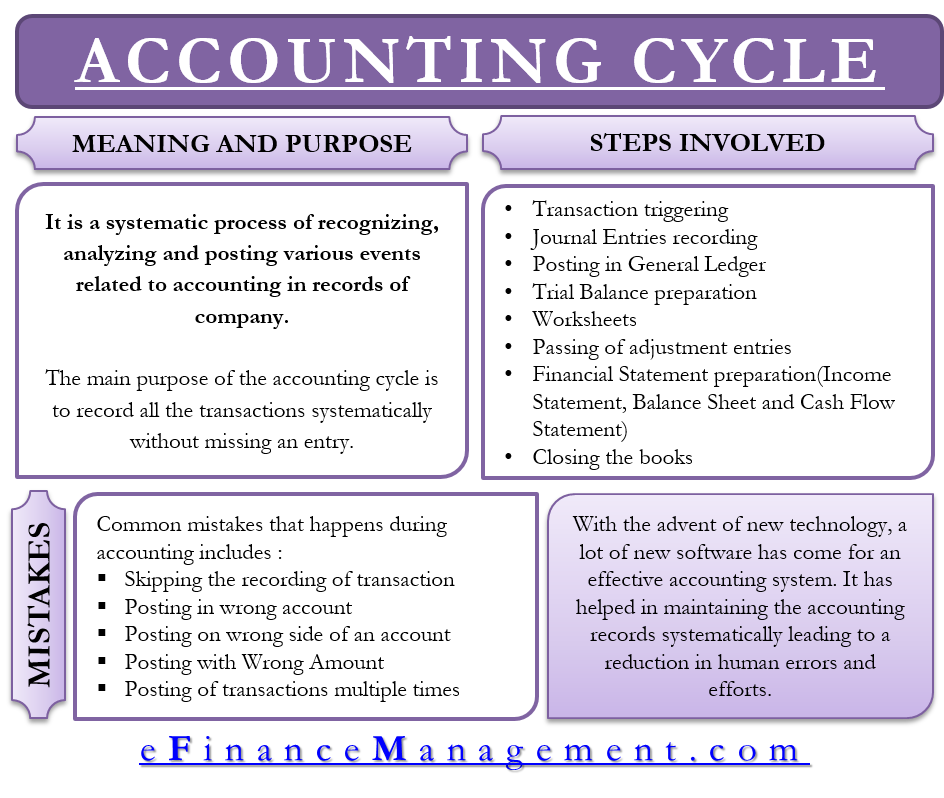

When you conduct a whole sequence of accounting activities in the appropriate order throughout a single accounting period is called as completing the accounting cycle. Say, for example, a small business that sells custom picture frames - let’s name it Picture Perfect - sells a customer a $350 frame.Accounting Cycle is a sequence of accounting activities to create financial statements that are performed in order to categorize, record, and summarize accounting information. During this initial stage, companies go through every transaction that affects their financials, though this should be an ongoing step for companies that are continuously creating customer invoices, buying inventory, paying bills, making payroll and collecting cash. The first step in the accounting cycle is to identify and analyze all transactions made during the accounting period, including expenses, debt payments, sales revenue and cash received from customers. The accounting cycle begins when a transaction occurs and ends when a company closes its book at the conclusion of an accounting period.
THREE STEPS OF ACCOUNTING PROCESS TRIAL
Determine the unadjusted trial balance.Below are the eight steps of the accounting cycle. The goal of the accounting cycle is to develop an accurate account of a company’s financial position. What Are the 8 Steps of the Accounting Cycle? This is especially crucial for the final steps of the accounting cycle, when financial statements are created and the books are reset. Some steps in the accounting cycle are more tedious than others, but each one is set up to enable bookkeepers or accountants to diligently check their work before proceeding. In short, the accounting cycle verifies that every dollar going into or out of the various general-ledger accounts is reported. The main purpose of the accounting cycle is to keep track of all financial activities that occur during a specific accounting period, be it monthly, quarterly or annually. The sequence culminates in the preparation of standardized reports that reflect the company’s financial performance and help guide internal and external decision-making.

Ensuing steps include data analysis and adjustments, if necessary. Typically, the domain of an accounting team or bookkeeper, the accounting cycle begins with a business event, or transaction. The accounting cycle comprises eight steps businesses follow to ensure that their books are balanced so they can be closed and reset for the next accounting period, when the cycle begins again. Once the accounting cycle is completed, financial statements can be generated.Before companies can close their books, transactions must be balanced and devoid of errors.The accounting cycle is an eight-step process companies use to identify and record their financial transactions.

This results in a faster close, regardless of whether the target is a weekly soft close or a hard close at the end of a quarter. Ideally, a business will engage in a “ continuous close,” spreading the workload across the course of the accounting period, rather than waiting until its end. A soft close is more like a solid estimate, typically used for internal management reporting, not for the public or investor purposes. A hard close is a thorough approach to closing the books, ensuring that all information is accurate and marking the end of financial activity for an accounting period.
THREE STEPS OF ACCOUNTING PROCESS SOFTWARE
The amount of time it takes a company to advance through the accounting cycle depends on several factors, including the volume of transactions, whether it uses automated accounting software and the type of financial close. During the cycle’s various stages, companies will record their financial transactions in a journal, transfer the details into a general ledger, analyze the entries and make sure the books are balanced and error-free before generating financial statements and closing the books for the period. The accounting cycle is a multistep process used by businesses to create an accurate record of their financial position, as summarized on their financial statements. Automating the process increases efficiency and reduces potential risks of misstatement. When handled manually, each step of the accounting cycle can be time-consuming, tedious and prone to error. This is accomplished through the accounting cycle, an eight-step process that helps businesses keep track of their financial activities by documenting, sorting and analyzing all transactions to ensure that each one is accounted for. East, Nordics and Other Regions (opens in new tab)Ĭompanies need to make sure their books are balanced and that they reflect all financial activity that occurred during an accounting period before the books are closed.


 0 kommentar(er)
0 kommentar(er)
